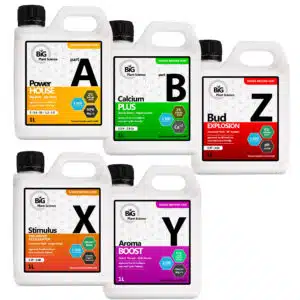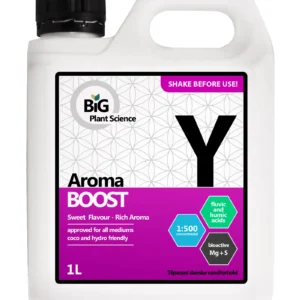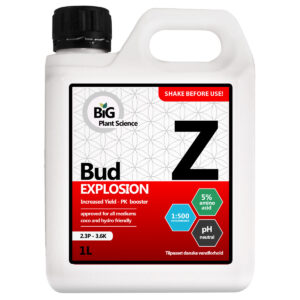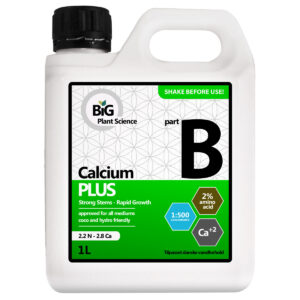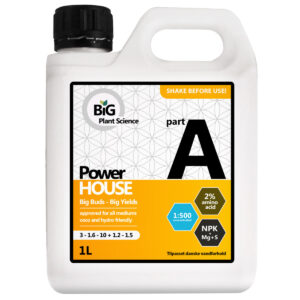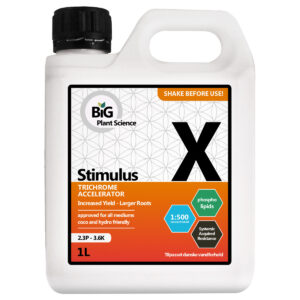Liquid Fertiliser - A Complete Guide

Liquid fertilizer refers to a form of fertilizer in which the nutrients necessary for plants to grow and thrive are dissolved in a liquid. From essential nitrogen to growth-promoting phosphorus and potassium, this article will guide you through the basics of liquid fertilizer. We will explore its composition and versatile applicability, so that you can optimize the well-being and development of your plants. Welcome to a world of liquid fertilizer where nutrition turns into prosperity.
read more about fertilizer here: The Best Fertiliser - Your 2023 Guide
Table of contents
ToggleIntroduction to Liquid Fertilizer ?
Liquid fertilizers represent a crucial innovation in the growing world that has given farmers, gardeners and growing enthusiasts a more flexible and efficient way to deliver essential nutrients to their plants. This type of fertilizer represents a concentration of necessary nutrients dissolved in a liquid substance. At its core, liquid fertilizers allow for more precise control over how plants receive the nutrients they need and when to receive them.
Definition of liquid fertilizer: Liquid fertilizer is defined as a concentrated and water-based solution that contains a carefully balanced mixture of nutrients that plants require to grow, flower and bear fruit. These nutrients primarily include macronutrients such as nitrogen (N), phosphorus (P) and potassium (K), as well as a number of important micronutrients such as iron (Fe), zinc (Zn), manganese (Mn) and copper (Cu). The liquid form enables a more efficient uptake of these nutrients by both root and foliar feeding.
Areas of application: Liquid fertilizers have found use in various growing contexts, including agriculture, horticulture and modern growing methods such as hydroponics. In agriculture, liquid fertilizers are used to improve the nutrient content of the soil and stimulate plant growth on a larger scale. In horticulture, it is often used to promote the flowering of flowers, vegetables and ornamental plants. Hydroponics, where plants are grown in water solutions without soil, also utilizes liquid fertilizer as the primary source of nutrients. This versatility makes liquid fertilizer an invaluable tool for anyone looking to optimize plant health and productivity.
Types of nutrients in liquid fertilizer?
Liquid fertilizer is like a balanced bank of vitality for your plants, filled with the necessary building blocks for their growth and well-being. This type of fertilizer includes two primary categories of nutrients that work in harmony to promote healthy development:
Macronutrients: Nitrogen (N), Phosphorus (P), Potassium (K)
These are the powerful fundamental nutrients that plants require in larger quantities. Nitrogen is responsible for green growth and leaf development. Phosphorus plays a crucial role in root development, flowering and fruit-bearing processes. Potassium strengthens the plant's general health, disease resistance and water regulation.
Micronutrients: Iron (Fe), Zinc (Zn), Copper (Cu)
While required in smaller amounts, the micronutrients are just as important. Iron is necessary for photosynthesis and chlorophyll production. Zinc contributes to enzyme activity and general plant metabolism. Copper plays a role in the formation of plant cells and other biochemical processes.
When these nutrients work together, they create a harmonious balance that gives your plants the nutrition they need to thrive. The next time you look at your blooming garden or lush field, remember that it is these microscopic elements that keep the plant world alive and well.
Advantages of Liquid Fertilizer
Liquid fertilizers are like a tailored wardrobe of nutrients for your plants, bringing with them a number of benefits. This innovative approach to plant nutrition offers more than just nutrition – it offers efficiency, control and adaptability that can make a significant difference in your growing experience:
Quick recording: Nutrients are absorbed at an incredible rate through root or leaf feeding. This means your plants can quickly get what they need without having to wait for slow decomposition processes. The result? Accelerated growth and healthy development.
Exact dosage: With liquid fertiliser, you are the master of dosing. The liquid formula allows you to precisely regulate how much nutrition your plants receive. This eliminates the risk of over-fertilizing or under-fertilizing, which can damage the plants and their surroundings.
Flexibility: Liquid fertilizers offer an unrivaled degree of flexibility. You can adapt your nutrient mixes to the individual needs of your plants, whether they are flowers, vegetables or trees. This adaptability means you can tailor your plant feeding to achieve the best possible result.
In a world where timing and precision play a role, liquid fertilizers enable you to get the most out of your plants' potential. With fast nutrient uptake, precise dosing and a tailored approach, it's like giving your plants the best version of themselves.
Correct Use: The Key to Success
To obtain maximum benefit from liquid fertilizers, correct use is essential. Before starting the fertilization process, it is essential to mix the fertilizer with water. The use of rainwater is recommended, as it is free of limescale and ensures optimal dissolution. To avoid overdose, it is important to carefully follow the instructions on the packaging.
Effective Dilution and Optimal Temperature
Effective dilution is a crucial factor in the correct use of liquid fertilizers. It is essential to follow the manufacturer's dilution recommendations to avoid overdosing. By achieving the right dilution, it is ensured that the nutrients reach the plants without causing damage.
It is also important to take into account the temperature of the soil. Liquid fertilizers work best when the soil temperature is 8 degrees Celsius or above. This ensures that the plants can effectively absorb the nutrients and avoid unnecessary strain on the groundwater.
Types of Liquid Fertilizer
There are several types of liquid fertilizers available, each with their own characteristics and uses. Here are some of the most common types:
- NPK Fertilizer: NPK stands for nitrogen (N), phosphorus (P) and potassium (K) – the three primary nutrients that plants need in large quantities. NPK fertilizers are balanced to meet these needs and are suitable for general growth and flowering of plants. Read more about NPK fertilizer!
- Micronutrients: Micronutrients are important nutrients for plants that are needed in smaller amounts. These include iron, zinc, copper, manganese and boron. Liquid fertilizers containing micronutrients can help prevent deficiency diseases and promote healthy growth.
- Organic Liquid Fertilizer: Organic fertilizers are made from natural materials and degradable substances. Organic liquid fertilizers release nutrients gradually and improve soil structure over time. They are an environmentally friendly option and can contribute to a healthy microbial community in the soil. Below you can see, among other things, organic liquid fertilizer for citrus trees. Read more about citrus trees here: Lemon trees and wintering
-
Big Plant Science - Complete Fertiliser Kit x5 offer (A,B,X,Y,Z)
- DKK 825,00
- Add to basket
Item no.: 26055 -
BioPower Y – Aroma Boost 1L – BiG Plant Science
- DKK 168,95
- Add to basket
Item no.: 26060 -
Simulate Flowers Z – Liquid Fertilizer Supplement
- DKK 137,00
- Add to basket
Item no.: 26062 -
BioPower B – Calcium Plus plant supplement 1L
- DKK 77,95
- Add to basket
Item no.: 26064 -
Liquid plant fertilizer for aquatic culture growth BioPower A 1L
- DKK 77,00
- Add to basket
Item no.: 26065 -
Stimulus booster plant fertilizer X 1L
- DKK 368,00
- Add to basket
Item no.: 26061
How to Use Liquid Fertilizer Correctly
Correct application of liquid fertilizers plays a crucial role in achieving desired results. Here are some steps to follow:
- Selection of Fertilizer: Choose a liquid fertilizer that suits your plants' needs and growth phase. Read the product label to understand the nutrient content and directions for use.
- Correct Mixing Ratio: Mix the fertilizer with water according to the manufacturer's instructions. Use a suitable container or spray bottle to achieve the proper dilution.
- Frequency of Application: The frequency of application depends on the plant species, growth phase and type of fertilizer. Follow the manufacturer's recommendations to avoid overdose or malnutrition.
Tips for Effective Use of Liquid Fertilizer
To achieve the best results with liquid fertiliser, the following tips may be helpful:
- Foliar fertilizer vs. Root fertilizer: Liquid fertilizer can be applied both through the leaves and directly at the roots. Foliar fertilizers are absorbed more quickly, while root fertilizers have a slower but more persistent effect.
- Time-Based Feeding: Feeding the plants with liquid fertilizer at specific times of the day or during the growing month can affect nutrient uptake. Follow a schedule based on the plant's needs and growth cycle.
- Avoid over-fertilizing: Although liquid fertilizers are effective, it is important to avoid overdosing. Too much fertilizer can damage the plants and cause nutrient disturbances.
- Storage and Durability: Store your liquid fertilizer in a cool and dark place, away from direct sunlight and extreme temperatures. Check the product's expiration date and use it before the expiration date.
- Environmental impact and Sustainability: Choose environmentally friendly liquid fertilizers that reduce the negative impact on the soil and the water environment. Also consider reusable containers for your fertilizer.
Conclusion
Liquid fertilizer has become a preferred method among garden enthusiasts due to its immediate effect, precise dosage and versatility of use. When used carefully according to the manufacturer's guidelines, liquid fertilizers can help promote healthy and lush plants in your garden. Make use of its benefits and enjoy a more vibrant garden.
also read Liquid fertilizer – Easy and effective: Everything you need to know
Frequently Asked Questions (FAQs)
Liquid fertilizer is a form of liquid fertilizer that contains nutrients such as macronutrients and micronutrients. It is quickly absorbed by the plants through the roots or leaves and supplies them with necessary nutrition.
Yes, liquid fertilizer has several advantages. It provides fast nutrient absorption and precise dosing. This is especially useful for acute nutrient needs and in hydroponic systems.
Yes, excessive use can harm the plants, so follow recommended dosage instructions.
The frequency depends on the plant type and growth phase. Read the product labeling for guidance.
Yes, liquid fertilizer is suitable for both indoor and outdoor plants.
Both types have their advantages. However, liquid fertilizer provides a faster nutrient absorption and more precise dosing.


